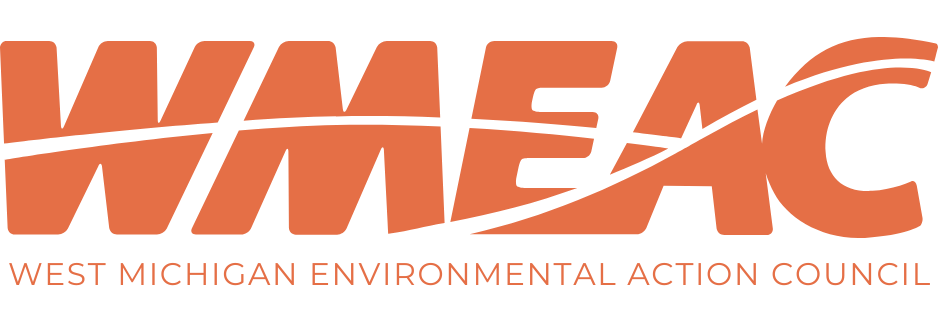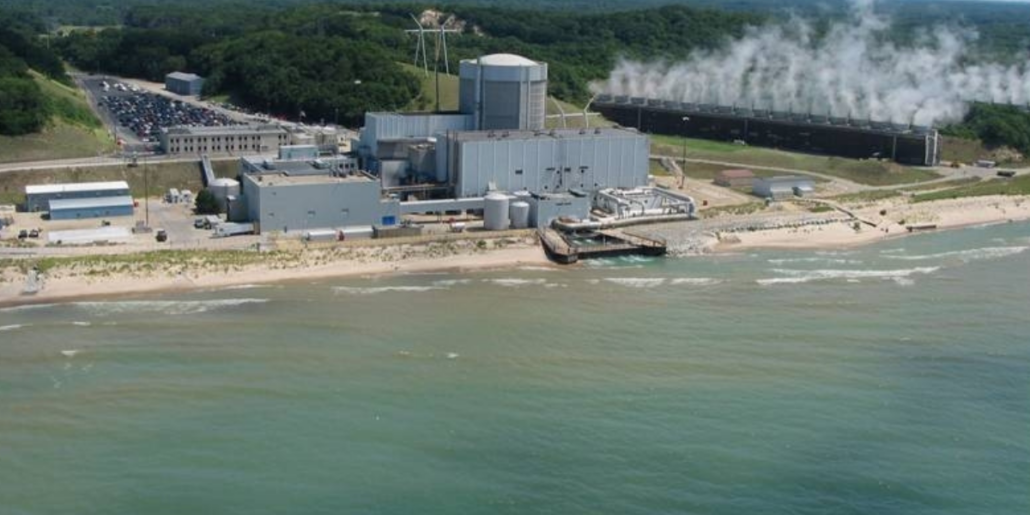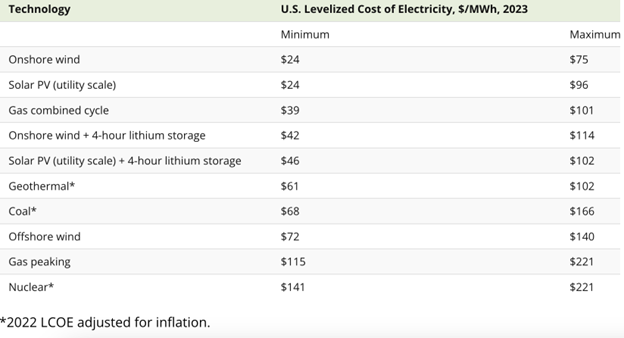By Grace Hasley, WMEAC Eco-Journalism Intern (published in the Grand Haven Tribune)
Last month, I started an internship at West Michigan Environmental Action Council (WMEAC) and was assigned to investigate Palisades’ potential for reopening. I was intrigued by the “beast” I uncovered. Energy production is a complicated topic, and this potential reopening is sparking a “heated” debate. To wrap my head around this, I wanted to know more about Palisades and nuclear energy. Bear with me as this is quite a complex issue, but it has tremendous future implications, so my hope is to inform to my best abilities.
To begin, I explored the history of the Palisades Nuclear Plant, located on the shore of Lake Michigan in Covert Township in Southwest Michigan, powered up in 1971. Palisades’ owner at the time, Entergy, closed the plant in 2022. Palisades was subsequently sold to Holtec International. Two years later, however, Michigan lawmakers have approved $150 million to restart the plant, and the federal government has promised a $1.5 billion loan.
Holtec has experience with nuclear plants. They own Indian Point in New York, a 60-year-old plant, currently closed and being decommissioned due to a new state law banning radioactive discharges into the Hudson River. Holtec is suing the state to overturn the ban. The company was recently in violation of federal regulations for having their workers sign agreements restricting them from discussing safety concerns or testifying against the company after leaving. Holtec has since changed this policy.
If Palisades is to successfully restart, it will be the first in the U.S. and the second in the world. It seems the reasoning is that once nuclear reactors are dormant, it is risky to get them back up and running again. Clearly, the nuclear industry doesn’t have extensive experience in doing so, which is just one reason this reopening seems to be turning so many heads.
I was curious to find out just how clean nuclear power is. Nuclear energy produces “…maximum power more than 92% of the time during the year,” according to the federal Office of Nuclear Energy. The Nuclear Energy Institute estimates nuclear energy saves our atmosphere from 470 million metric tons of carbon dioxide emissions. On the other hand, it requires mining uranium, leaving behind radioactive wastes according to the U.S.Environmental Protection Agency (EPA). There are also concerns for the health of miners, and environmental justice concerns from the uranium mining on tribal lands.
Nuclear plants produce significant hazardous wastes that don’t just disappear. Decades ago, the federal government promised a national repository. Yucca Mountain in Nevada was the designated location but was terminated in 2011 under the Obama Administration. Today, nuclear plants continue to store waste onsite. There are currently 21 concrete waste containers at Palisades, each containing 30 tons of nuclear waste, situated near the Lake Michigan shoreline. Nuclear waste is radioactive for hundreds to thousands of years, and disposal is currently pushed forward to future generations.
So, what’s the best kind of energy production? All have pros and cons, and different costs – see the chart.
We’ve explored nuclear, but what about other forms of energy? Since their source is infinite, wind and solar could be the cleanest energy. Sun and wind will never run out, but they’re not constantly available so we would need to utilize a variety of renewable energy sources. For example, when there’s less sunlight, energy might come from wind. Energy stored in batteries can also be used when the weather affects renewable energy production. And of course, these sources also have negative impacts associated with how they are produced, and their ultimate disposal that need addressing. Their technologies will need to continue to evolve.
Based on my research, the conversation on clean energy is polarizing. Is there a perfect energy source? No, I don’t think there is. I believe the best choice will have the least negative impacts on the environment and human health– so I invite readers to learn more. If you’re like me and are curious about the Palisades’ potential reopening, keep your eye out for opportunities to get involved. In June, Holtec held an open house for the public. Check for upcoming opportunities like this on the U.S. Nuclear Regulatory Commission website.
How we power our planet is a tough conversation. As Michiganders, it’s important we take responsibility for our knowledge of these issues affecting us today and impacting future generations. Use the resources below to navigate your own educated stance.
For more information:
Nuclear Energy Institute– Nuclear energy trade association
Sierra Club- Michigan Chapter– Michigan Chapter of the Sierra Club, nonprofit environmental organization
U.S. Office of Nuclear Energy– Federal agency that promotes nuclear energy
Canary Media– Independent nonprofit newsroom covering clean energy issues
Beyond Nuclear– Nonprofit organization advocating against nuclear energy production
Holtec International– Holtec’s company website




